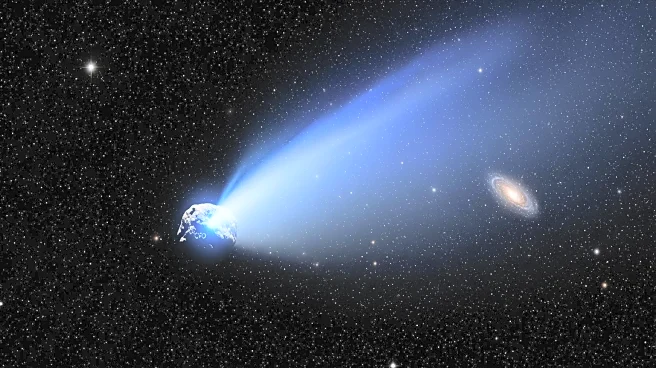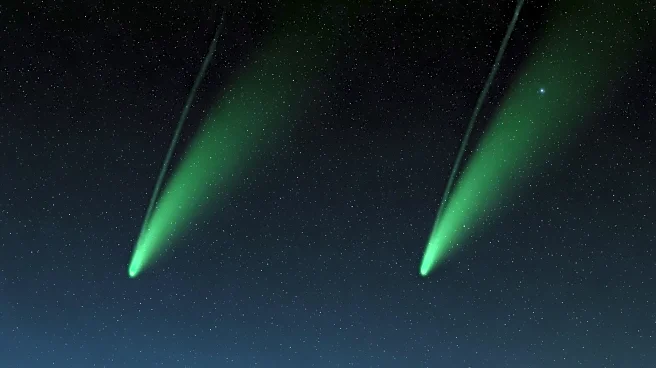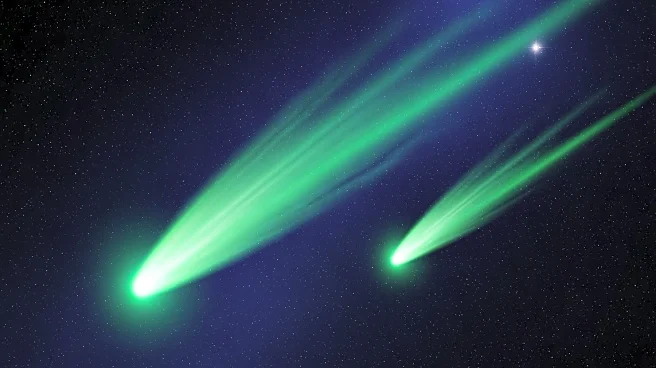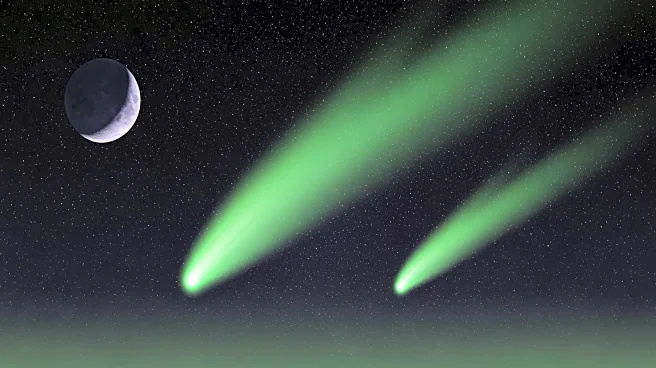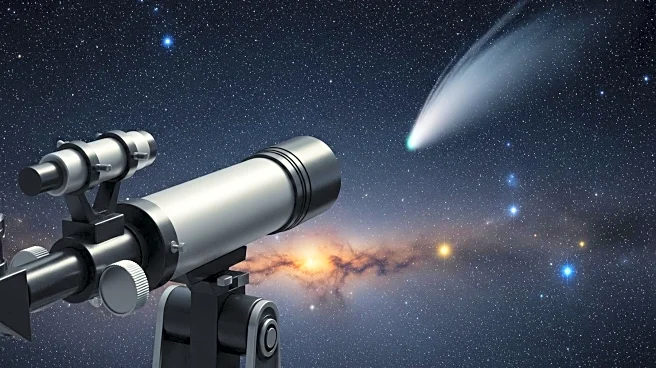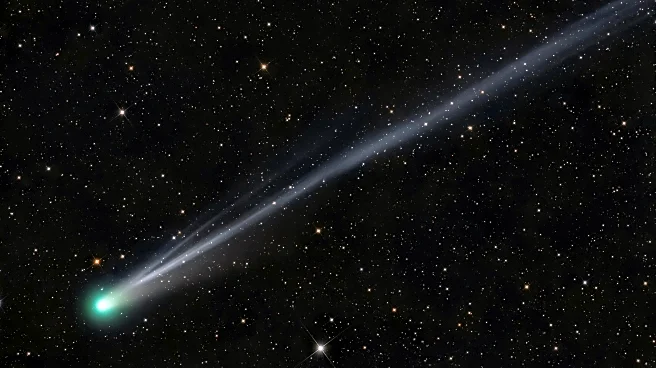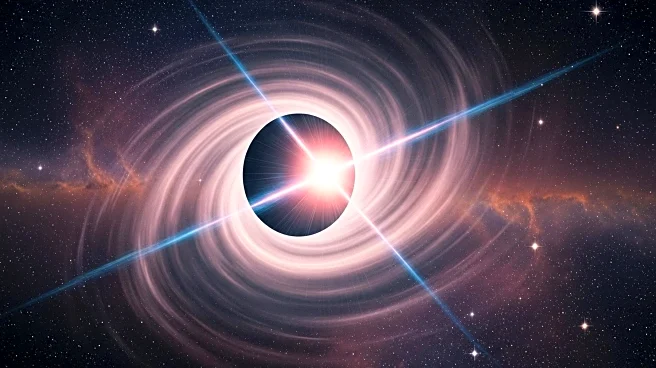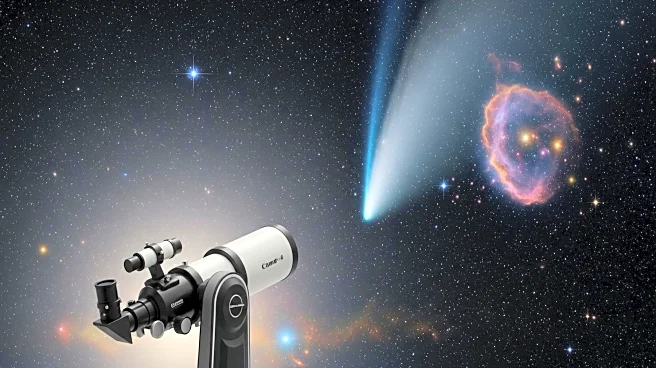What's Happening?
Astronomers have detected carbon monoxide gas venting from the surface of the largest Oort Cloud comet ever observed, C 2014 UN271, also known as Bernardinelli Bernstein. This comet, located over a billion
miles from the Sun, is active at a distance where most comets are typically dormant. Led by Nathan X. Roth from NASA's Goddard Space Flight Center, the team used the Atacama Large Millimeter/submillimeter Array (ALMA) to observe the comet's activity. The comet, approximately 85 miles wide, is releasing gas from beneath its frozen surface, indicating that it is far from dormant. The discovery challenges previous assumptions about comet activity and suggests that distant comets can become active long before entering warmer regions of the solar system.
Why It's Important?
The findings provide new insights into the behavior of comets from the Oort Cloud, a distant shell of icy bodies surrounding the solar system. Understanding the activity of C 2014 UN271 could offer clues about the early solar system and the materials that formed planets. The discovery highlights the role of volatile ices, such as carbon monoxide, in driving comet activity at great distances from the Sun. This research could refine models of comet evolution and contribute to the broader understanding of solar system dynamics.
What's Next?
As C 2014 UN271 approaches its closest pass to the Sun in 2031, scientists expect to observe new materials like methane and carbon dioxide escaping from the comet. Future observations will focus on how the comet changes as it warms, providing opportunities to study the evolution of cometary activity. The team plans to compare this comet with others from the Oort Cloud to determine if it is typical or an outlier, enhancing the understanding of comet behavior.
Beyond the Headlines
The discovery raises questions about the implications of understanding distant comet activity for planetary science and the study of solar system formation. The research underscores the importance of advanced technology in capturing detailed observations of cosmic phenomena, contributing to the broader knowledge of the universe. The findings may also prompt discussions about the role of international collaboration in advancing scientific research.
